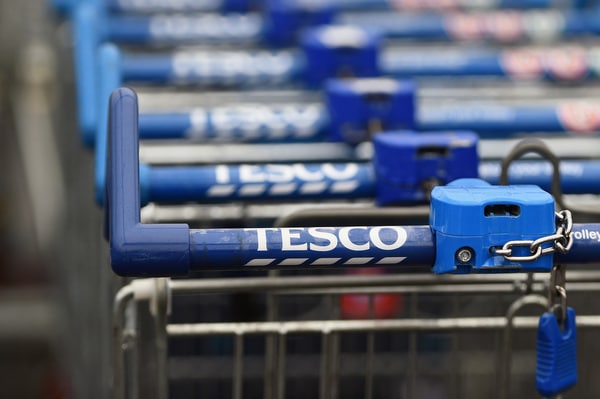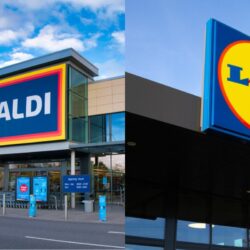“It‘s been a difficult year for Tesco”, the Big Four Boss Dave Lewis, said in today‘s 2014/2015 preliminary results, as the supermarket giant announced its staggering £6.38bn loss – the largest in its history.
The results are the first released since Chief Exec Dave Lewis joined in July 2014, and mark its third loss, with last year‘s annual pre-tax profit coming in at £2.26bn.
The results include £7bn one-off charges and £4.7bn fixed asset impairment, which the grocer puts down to “challenging industry conditions and profit decline”.
“It has been a very difficult year for Tesco. The results we have published today reflect deterioration in the market and, more significantly, an erosion of our competitiveness over recent years. We have faced into this reality, sought to draw a line under the past and begun to rebuild, and already we are beginning to see early encouraging signs from what we‘ve done so far,” said Lewis.
Tesco has lost out to Aldi and Lidl and has not been able to keep up with the price slashing between the Big Four. This has led to extreme cost cutting actions – mainly store closures.
While Aldi is looking to open over 1.02m sq ft of retail units this year – roughly around 60 new stores, Tesco has had to close 43 of its locations, with plans to shut down a further 49.
The retailer is aware that the market is “still challenging” and that it may have difficulties in the year ahead.
“Dave Lewis can only hope that Tesco‘s night is darkest just before dawn, because results don‘t get darker than this” comments Paul Thomas, a consultant of Retail Remedy.
“A £6.4bn loss isn‘t just one of the biggest losses in British corporate history, it‘s a black hole that risks consuming a once all-powerful brand. To say Tesco‘s CEO has a mountain to climb to reverse its decline is to underplay the scale of the task. At times the combative Mr Lewis must feel like an ant scaling the Himalayas.
But at least progress has been made. Gone are the complacency, the hubris and the corporate jets. The brand has retrenched and jettisoned many of the peripheral businesses that were dragging it down,” he continues.
A back to basics approach in its stores has seen it introduce simple and effective offers that keep shoppers coming back. The closure of poorly performing stores – and the addition of more staff at those that remain – has improved service levels.
Such improvements will give the fallen titan back some momentum, but the constant price war will hamper profit growth.
Ultimately Lewis‘ strategy will be judged by its success at making Tesco stores appealing to shop in again. If the brand can repair its reputation for good service, great choice and strong offers, it will have at least stopped the rot. But the journey will be long and hard” adds Thomas.
Tesco is not the only supermarket suffering. According to Begbies Traynor‘s Red Flag Alert research, the food retail industry is continuing to experience “significant” financial distress. – increasing by 66% to 4,696 struggling businesses over the past year.
“Looking to the future, the picture only gets bleaker for small UK food suppliers, as German discounters, Aldi and Lidl, are predicted to capture 20% of UK market share”, Julie Palmer, Partner at Begbies Traynor commented.
2015 is set to be a turbulent year for Tesco, with JP Morgan urging the company to focus on shares. Since Lewis‘ drastic ‘turnaround‘ plan was released, Tesco‘s shares increased by 25%. JP Morgan‘s Borja Olcese declared, “We find it difficult to believe that Tesco can continue to drive volumes, improve margins and pay down debt simultaneously without raising capital”.
Britain‘s largest supermarket will also need to sell assets to raise further cash, having already shut its headquarters in Chesnut in order to sa
RELATED STORIES


















